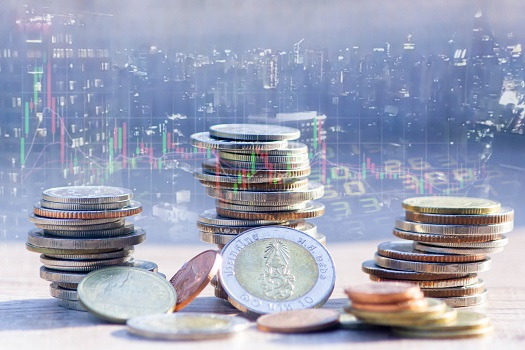Reading Silver & Gold Market Charts
Precious metals have been traded as investment commodities for centuries. For example, on June 2nd, the price of an ounce of gold was $1,729. This is known as the spot price, and a troy ounce of silver was priced at just above $18. If you look at the pricing chart of silver, you would have noticed a 20 percent rise on a month-to-month basis, while gold posted a smaller increase from $1,700 on May 1st. If they’re interested in correctly timing their purchases of precious metals, including gold and silver bars, Scottsdale residents might benefit from the following advice about gold and silver market charts.
History of Gold & Silver Charts
By virtue of being investment commodities traded on international exchanges, gold and silver can be charted in terms of pricing and trading volume. This charting practice dates back to the Dojima rice markets of Japan in the 16th century, where the first futures commodities exchanges operated. The original charting method, known as Japanese candlestick bars, can be used for gold and silver, but this is mostly used by traders who follow technical analysis during active trading sessions.
Types of Gold & Silver Charts
The average gold or silver investor will typically follow line charts that follow pricing. Active traders who are into futures contracts and options will follow open-high-low-close (OHLC) candlestick charts similar to those used for stock trading on Wall Street. These days, you can access precious metals pricing charts online from many sources. For example, the Chicago Mercantile Exchange offers charts with real-time information set by trading action from around the world. In general, charts are displayed on a two-axis plane: the y-axis represents the price, and the x-axis indicates the time scale.
Pricing Trends for Gold & Silver
When you look at the three-month line chart for gold on June 2nd, you’ll see how investors panicked along with Wall Street after the middle of March, when the price per ounce plummeted from about $1,650 down to nearly $1,450 in just a few days. Once Wall Street recovered, the opposite trend emerged, thus pushing gold prices to nearly $1,750 by May 20th. This movement is clearly visible on the chart, and it solidifies gold as a “flight-to-safety” commodity investors flock to during times of economic uncertainty.
Technical Analysis of Gold & Silver
Most gold and silver investors operate on long-term visions, which means they can rely on the data visualization of line charts to guide their decisions. Active traders who exercise options and speculate on the future pricing of precious metals will activate more sophisticated charting features for the purpose of estimating the best positions to take. In the case of silver, which soared through May, technical analysis traders may seek to profit from a slight pullback in June by taking short options contracts, meaning they’ll sell silver and pocket the difference when the price drops.
Whether they’re looking for expert advice on precious metals pricing or they want to buy gold, Scottsdale residents should work with trustworthy precious metal dealers who offer high-quality service and have years of experience. Call on the industry-leading professionals at First National Bullion when you’re ready to invest in precious metals, including gold, silver, platinum, and palladium. Give us a call today at 480-546-8928.
The statements made in this blog are opinions, and past performance is not indicative of future returns. Precious metals, like all investments, carry risk. Precious metals and coins may appreciate, depreciate, or stay the same in cash value depending on a variety of factors. First National Bullion does not guarantee, and its website and employees make no representation, that any metals for sale will appreciate sufficiently to earn the customers a profit. The decision to buy, sell, or borrow precious metals and which precious metals to purchase, borrow, or sell are made at the customer’s sole discretion.


